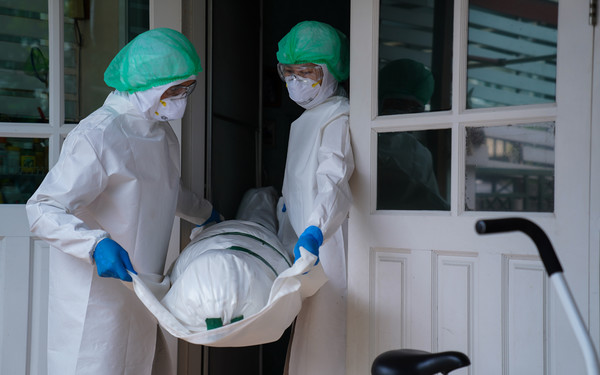As the number of Covid-19 infections spread rapidly, nearly 5,500 people lost their lives in Korea this year.
The number of Covid-19 deaths in three-and-a-half months accounted for half of the country’s accumulated fatalities since the outbreak of the pandemic more than two years ago.

According to the Korea Disease Control and Prevention Agency (KDCA), the cumulative death toll has reached 11,052 midnight Wednesday. Some 49.7 percent of the total, or 5,489 deaths, occurred this year. It is nearly equal to the number of deaths that occurred for one year and 10 months from Feb. 20, 2020, to Dec. 31, 2021.
Last December, the spread of the Delta variant pushed the number of severely ill patients to result in 1,939 deaths. The monthly death toll fell to 1,192 this past January when the quarantine authorities re-tightened the social distancing system.
The death toll began to rebound since February, when the Omicron variant began to spread in earnest, and the government eased its Covid-19 restrictions. The number of deaths rose back to 1,303 last month and surged to 2,994 in the first 16 days of this month.
However, some private experts expected the actual number of deaths to exceed the official death toll. Some medical institutions might not have classified confirmed Covid-19 patients who died after being released from quarantine as Covid-19 deaths. When Covid-19 patients die after the quarantine period is over, doctors are supposed to report them based on their judgment of causality, but they are not obliged to do so.
“Confirmed Covid-19 patients who die within 28 days of being released from quarantine are highly likely to have died of the pandemic, but doctors are not obligated to report them or don’t have time to figure them out,” said a university hospital doctor, wanting to remain anonymous. “The actual number of deaths could be higher than the official records.”
He went on to say, “I have never heard before that the bereaved families must wait for days because cremation facilities cannot meet the demand. That shows how serious the current situations are.”
A research team of excess fatality at the University of Washington, the U.S., also released a study result recently, saying that the global Covid-19 death toll could be three times higher than official records in Lancet. According to the study, about 5.94 million people were reported to have died of Covid-19 from January 2020 to December 2021. Still, the actual deaths were estimated to be three times higher than that, with 18.2 million.
Korea reported 5,620 Covid-19 deaths during the period, but the study estimated 4,630 more people died of the disease. The report did not even consider the surge of deaths this year.
Meanwhile, as the funeral period is extended to five or six days, instead of the usual three, due to insufficient cremation facilities, the government has decided to raise the operation rate of cremators.
The number of cremations in the first 14 days of this month averaged 1,110 per day, and 17.5 percent, or 194, were Covid-19 deaths.
In a daily briefing, the Central Disaster Management Headquarters said it would increase the daily operation of cremators at 60 public cremation facilities throughout the country to seven times per cremator until mid-April. Their operation times will also be extended by two to six hours a day.
“The demand for cremation has sharply risen due to the increased number of deaths in winter, growth of deaths caused by population aging, and surge in Covid-19 deaths,” said Son Young-rae, head of the social strategy team at the headquarters.

